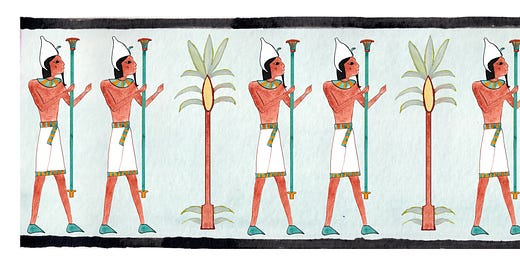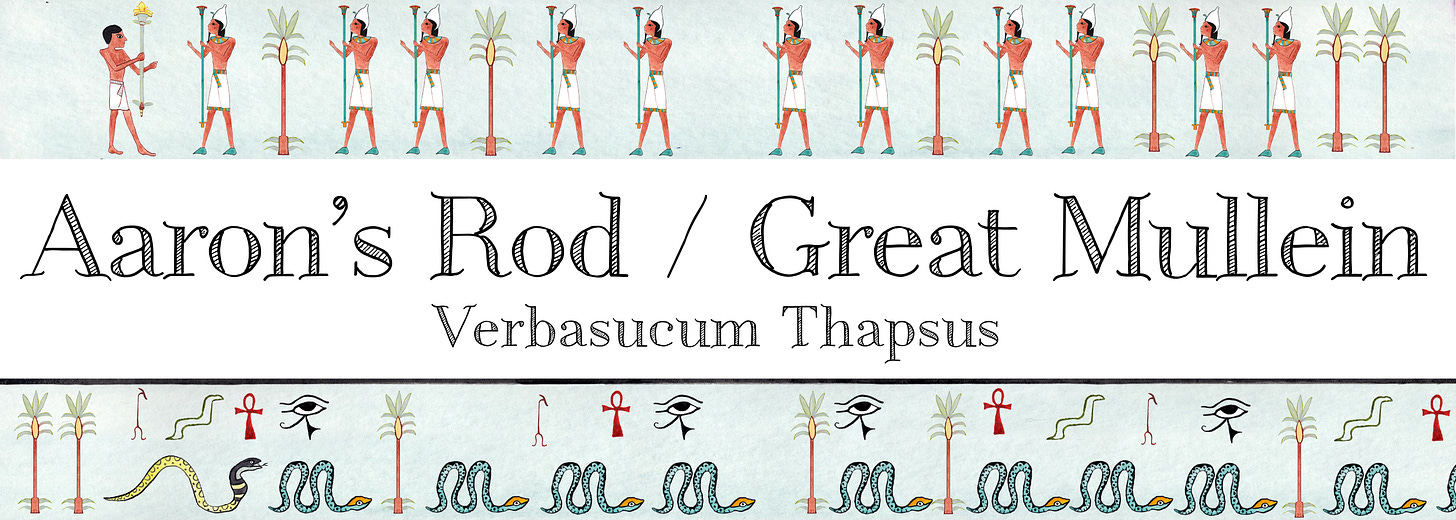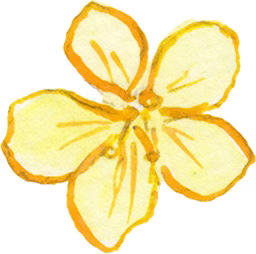Since the Middle ages, sorcerers of all kinds chose Aaron's Rod as their symbol to invoke mystical powers. It was highly praised as a magic wand and witches used the dried, rolled-up leaves to light candles when casting spells and making love potions. It was therefore also called Hag's Taper. In Anglo-Saxon times, a hag or heagtess, was a witch or sorceress.
But the history goes back much further than that-right back to Ancient Egypt, almost 3,500 years ago. Pharaoh Ramesses II, who had enslaved the Israelites, one day demanded proof of the power of their God. In order to do this, Aaron (brother of the prophet Moses, who was the step brother of Ramesses) threw his rod to the ground and it turned into a snake.
Not wanting to be outdone, the Pharaoh's high priests also threw their rods to the ground and they too turned into snakes. But unfortunately for them, Aaron's snake immediately gobbled up all their snakes and then promptly turned back into Aaron's rod again, leaving the Pharaoh's high priests empty handed. Job done, power of God proven!
Or was it? Ramesses II still didn't release the Israelites, so Aaron used the power of his rod again, this time to launch ten deadly plagues on Egypt. And it was only Egypt being ravaged by said plagues that convinced Ramesses of God's power and led him to set the Israelites free.
Later, in another display of its power, Aaron's Rod (the sceptre) was locked in a tabernacle overnight along with the rods of the leaders of all tribes of Israel. When the doors were opened the next day, it had budded and burst into yellow flowers. This was taken as proof that Aaron was the ruler over all tribes, which is how the flower got its name.
Ever since those biblical times, the plant named after Aaron's Rod has been associated with magic. It became the magic wand for sorcerers all around the world and it still is today.
The other name for Aaron's Rod, 'Great Mullein', has an even older history. Over 6,000 years ago, the PIE word for soft was mel. This became ‘moleyn’ in Old English. It refers to the Great Mullein's lovely thick, soft leaves.
John Gerard (1545-1612)- barber-surgeon, gardener and famous 16th century botanist wrote many recipes for the medical use of Great Mullein. Most were either to help with coughs or to sooth piles (in an ointment made of Great Mullein mixed with hog grease). The plant was so powerful, it could heal both ends of a person! Even in the 1930’s it was still mentioned in information collected by the Irish Folklore Commission. The stories they found, suggested to smoke dried Great Mullein leaves in a clay pipe in order to cure asthma and bronchitis.
The Latin name Verbascum means ‘with a beard’, referring (like other old names as Hare’s-Beard, Feltwort and Velvet Plant) to the softness and hairiness of the leaves. Thapsus comes from the Greek word ‘Thapinos’ which meant ‘yellow’.
There are a number of other names for Great Mullein: Candlewick, Hedge-Taper, Jacob’s Staff, Bullock’s Lungwort (it was used as cough medicine for cattle), Jupiter’s Staff and Peter’s staff.
If you enjoyed reading this, you might enjoy reading about other wildflowers too. You can easily find all posts written so far in the Flowerology alphabetical archive .
This newsletter is NOT a field guide for flower identification. It’s often difficult to tell the difference between harmless plants and poisonous plants and some flowers are rare and protected by law, so, NEVER pick or use any plants or flowers if you’re not sure about them.
illustrations and text ©Chantal Bourgonje
















I keep meaning to ask you what PIE means ?
And thanks for reminding me not to cough when I have a bottom full of hog grease !
Thanks again.
It's uncanny how often I read something on Substack and that same day or soon after I see the subject of the post. Or vice versa. Yesterday my mother showed me her verbascum covered in caterpillars. I wondered what species they were. Now I know! Thank you!